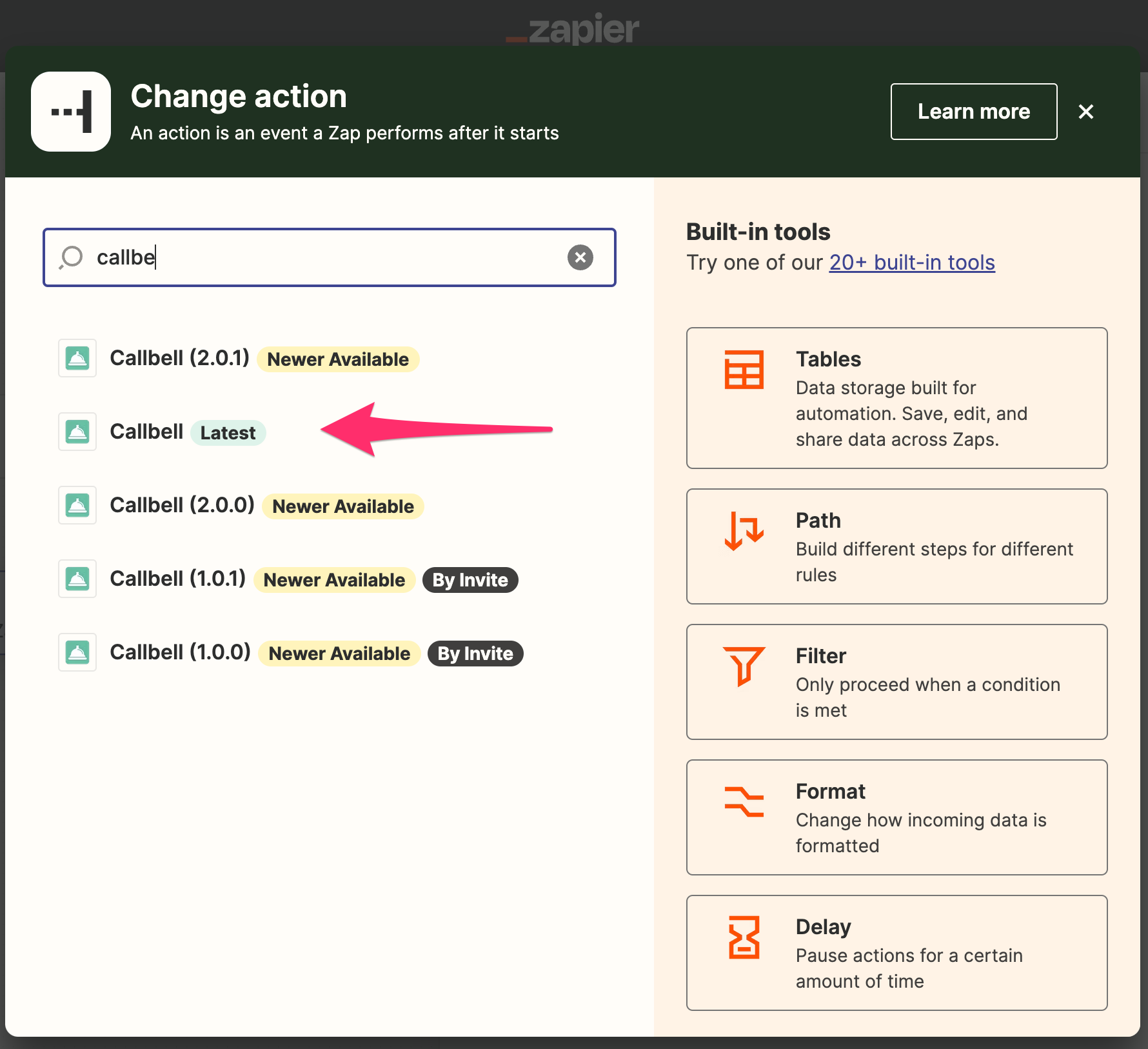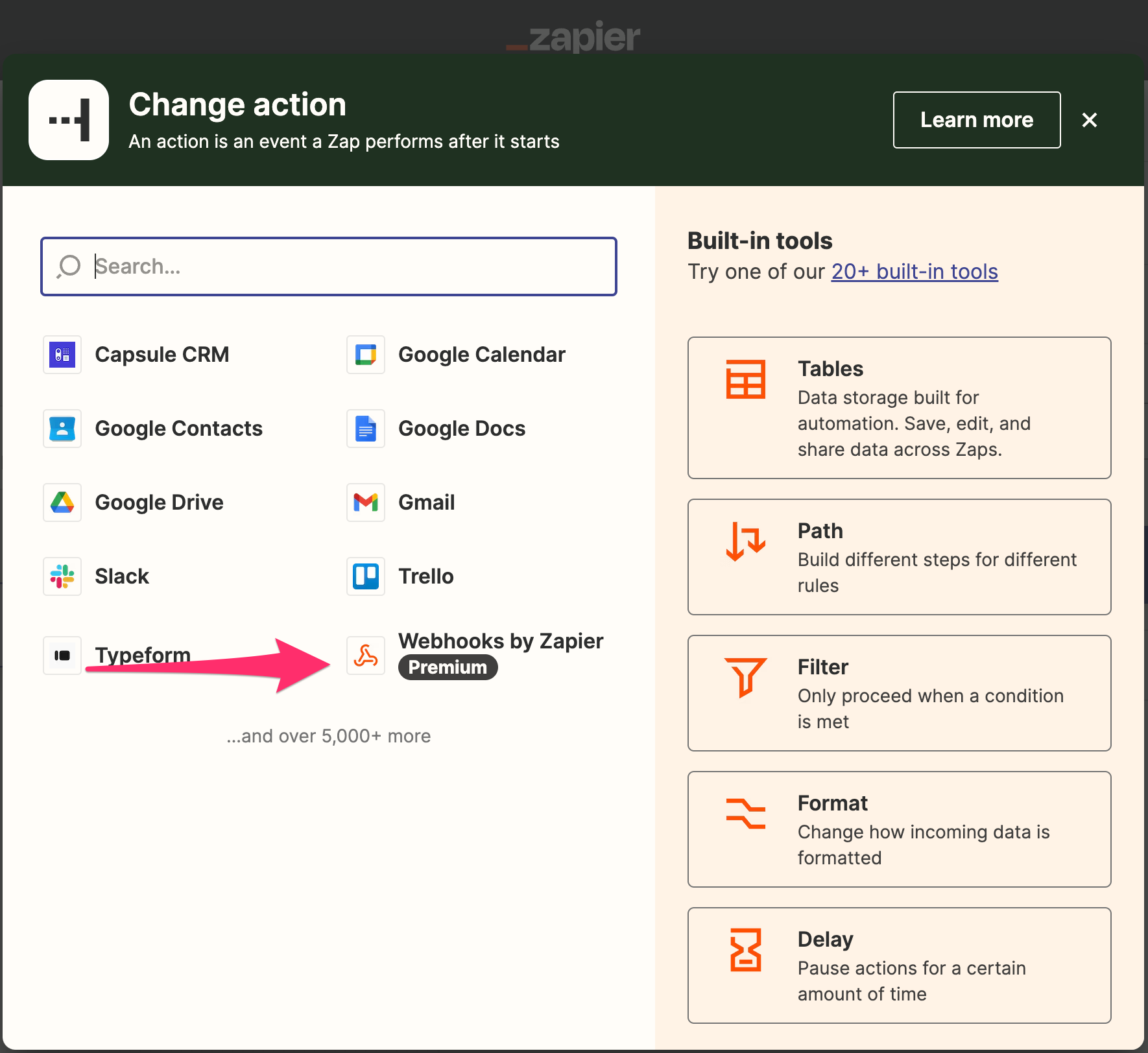Using Advanced Webhooks
Here we'll see how to use Callbell through Zapier by using Zapier's custom webhook as an action. This is a more advanced way to use Callbell in Zapier, but it gives you more flexibility because you can use our public API to perform actions.
See API reference for more info about the endponts and the payloads.
Using Zapier's Custom Webhook
Make sure you select the right Callbell app (latest):

Then select "Webhooks by Zapier" as the action app:

The reccomened action is "Custom Request" here:
Regardless of the action you choose, you'll need to set up the webhook URL correctly.
Webhook URL
The webhook URL is the URL that Zapier will use to send data to Callbell.
In this section you can find the url to use for the webhook.
Webhook Payload
The webhook payload is the data that Zapier will send to Callbell.
The payload must be in JSON format.
Authentication
You will need to authenticate your request to Callbell.
You can do this by adding the following headers to your request:

The Content-Type set to application/json is required.